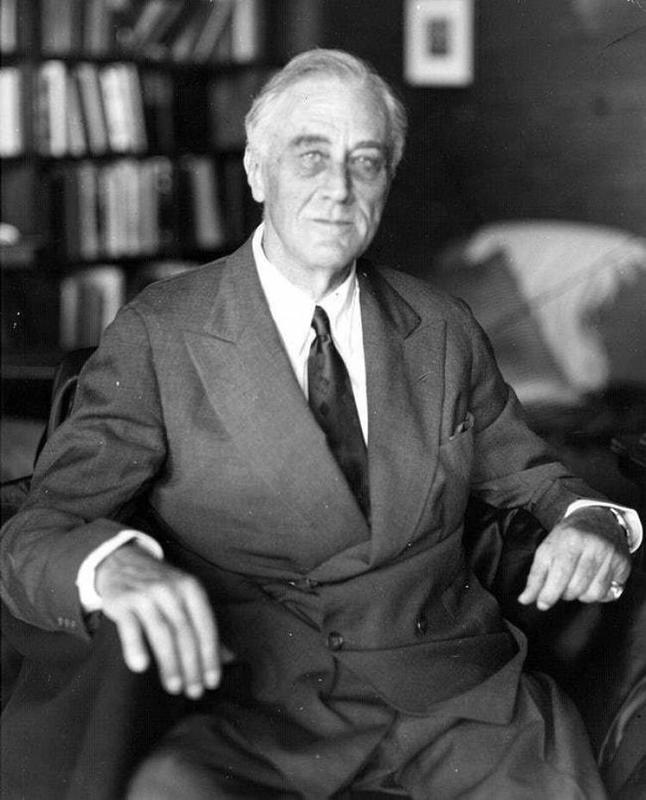
Franklin D. Roosevelt was the 32nd President of the United States of America, and served in the office for a longer period than would be permitted under current rules. He took up his seat in the Oval Office in March 1933, and didn't leave it again until April 1945. What made Roosevelt especially remarkable is that he'd suffered a disease which had rendered him unable to walk, but had managed to convince most of the world that he could. He could 'walk' short distances by using a cane and an iron brace and swiveling his hips, and in other cases, his aides would simply carry him by his elbows.
Even in this picture, he may have been convincing people that he was feeling better than he actually was. It was taken on April 11th, 1945. By the following morning, he'd passed away after suffering a huge brain hemorrhage.
Celebrities are no strangers to changing their looks for a role. And in some instances, they have to get pretty extreme. From 500-calorie-a-day diets to drinking pints of ice cream, Actors and actresses know what it takes to change their bodies in preparation for a new film.
Charlize Theron is no stranger to gaining and losing weight for movie roles, as we remember her transformation in Monster. Charlize Theron gained close to 50 pounds for her role as Marlo in Tully. Theron said that “for the first time in my life I was eating so much processed foods and I drank way too much sugar. … I remember having to set my alarm in the middle of the night in order to just maintain the weight.”
You’re used Chris Hemsworth's hulk-like figure in Thor, but In the Heart of the Sea required a totally different diet. The movie required the cast members lose a ton of weight to make their stuck-at-sea plight more believable. Chris Hemsworth said there were days when all he ate was one boiled egg, a couple of crackers, and a celery stick.
Anne Hathaway wanted to get serious for her role in Les Misérables, as she was playing Fantine, a starving prostitute with tuberculosis. So Anne Hathaway went on a diet of “rabbit food” to drop 25 pounds. Hathaway explained her diet was essentially just starving herself, but she didn’t want to give details, as she doesn’t want to encourage anyone to copy her emaciated look. She did note that she “just had to stop eating for a total of 13 days shooting,” however. And at one point, her bones became so frail that she reportedly broke her arm.
Matthew McConaughey's portrayal of Ron Woodruff in Dallas Buyers Club, a man with HIV/AIDS, was spot-on, earning him the title of best actor at the Oscars. But it also required a serious physical transformation. Matthew McConaughey said he lost 38 pounds for the role. During filming, he said he lost a lot of energy from eating so little — and he hit plenty of plateaus along the way. Finally, with a strict diet, he got down to 143 pounds. And while he did cardio to help with the weight loss, he said it was 90% what he was eating and portion size.
Hilary Swank had to put on 23 pounds of pure muscle for her role as a boxer in Million Dollar Baby. The process doesn’t sound easy, however. “I started working out five hours a day — I had to eat 210 grams of protein a day,” Swank said. She also mentioned that she had to consume 60 egg whites per day, and when that proved too difficult, she had to drink them. And to keep the muscle on, she would get up and drink protein shakes in the middle of the night.